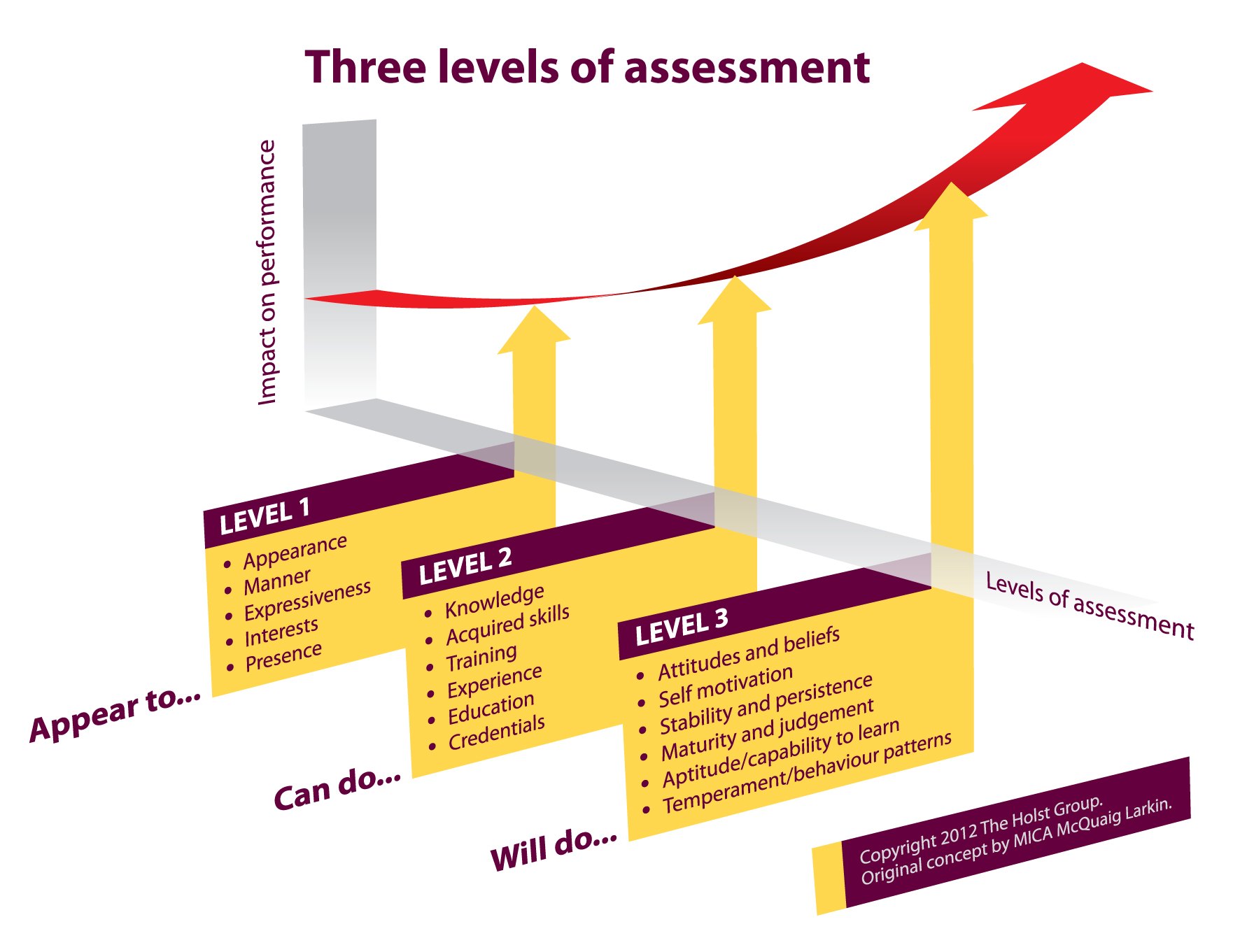How to read someone like a book
Reading people is tough. How do you fight past your gut-instinct to make an informed impression about the person in front of you? Unsurprisingly, your gut-instinct does play a part but it should be a small part of your decision making process.
Follow these three levels to understand an individual:
• Level 1 – how does someone ‘appear’ i.e. your first impression?
• Level 2 – what skills/experience/education do they have i.e. CV?
• Level 3 – what are their natural strengths/aptitude/ability i.e. the hidden factors?
**Level 1**
Your gut feeling is a difficult emotion to get over. A series of experiments by Princeton psychologists Janine Willis and Alexander Todorov reveal that all it takes is a tenth of a second to form an impression of a stranger from their face.
The research study measured attractiveness, likeability, competence, trustworthiness, and aggressiveness. So in a tenth of a second you are making a judgement on a lot of factors that you would count as important employment qualities.
Your gut feeling is important. In face-to-face sales you want your customers to have a good first impression. However, your whole decision shouldn’t hinge on this factor.
Fight past the type of suit they are wearing, how strong their handshake is and whether they smile. Important, yes, but these factors won’t tell you if they can sell or not.
**Level 2**
After gut feeling, the CV is usually the document that interviewers rely upon for most of their decision-making. Does the individual have experience that will make them more suitable?
But is an individual’s previous experience the most important factor when making a decision about hiring someone? No. Sure, some roles require certain experience or qualifications that will provide knock-out criteria. But the right person will learn how to be successful in their role – the role won’t define the person.
**Level 3**
By far the most difficult to identify are all the hidden traits you will never identify at interview stage without additional assessment and questioning:
- Aptitude/Capacity to Learn..
- Temperament/Behaviour Patterns
- Character:
- Attitudes and Beliefs.
- Self Motivation.
- Stability and Persistence.
- Maturity and Judgment.
Think of these three areas – ability, temperament and character – as the three legs of a stool. If one leg is far shorter than the others, the stool is very unstable. If one leg is missing completely, it will fall over!
Experience has shown that most organisations will hire on level 1 & 2, and fire on level 3.
To increase your chances of getting the next recruit right make sure you follow the mantra – you don’t know what you’re looking for unless you benchmark it.
About the author: Iain Chalmers is the Managing Director of Holst. Holst distributes The McQuaig Psychometric System. To contact Iain email iainhchalmers@holstgroup.co.uk













